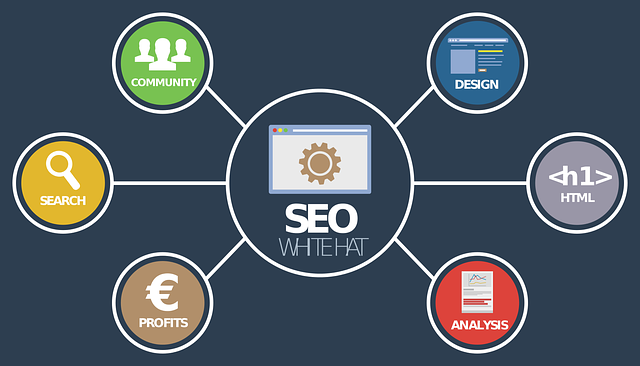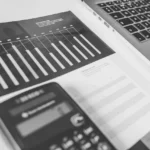Manufacturing accounting is the branch of accounting that deals with the financial management and control of manufacturing operations. It involves the collection, recording, analysis, and reporting of financial data related to the efficient production of goods.
Manufacturing accounting focuses on tracking the cost of production, managing inventory, allocating overhead costs, and analyzing performance to optimize production processes and improve profitability and create more value. Manufacturing businesses need to have accurate and timely financial information to make informed decisions at the right time and to maintain financial statements.
Manufacturing accounting involves various accounting methods and techniques, including cost accounting, job costing, process costing, inventory valuation, overhead allocation, budgeting, forecasting, and performance measurement.
Scope of manufacturing accounting
- Planning and budgeting in manufacturing accounting
In manufacturing accounting, planning, and budgeting are essential activities that help the organization achieve its goals efficiently and effectively. Planning involves determining what needs to be produced, how it will be produced, and when it will be produced. Budgeting involves estimating the resources needed to achieve the plan and determining how those resources will be allocated. Both activities are closely related and interdependent and require input from various departments within the organization.
- Financial analysis in manufacturing accounting
Financial analysis is a critical aspect of managing a manufacturing business. It involves the use of financial data to assess the company’s financial health and performance, identify strengths and weaknesses, and make informed decisions. Financial analysis in manufacturing typically includes examining financial statements such as income statements, balance sheets, and cash flow statements to evaluate profitability, liquidity, solvency, and efficiency.
It also involves analyzing financial ratios and metrics such as return on investment, gross margin, inventory turnover, and debt-to-equity ratio to assess the company’s financial health and performance relative to industry benchmarks.
- Costs/margin analysis in manufacturing accounting
Costs/margin analysis is an important tool for managing profitability in manufacturing accounting. It involves analyzing the costs associated with producing a product, such as materials, labor, and overhead, and comparing them to the revenue generated by selling that product.
By calculating the gross margin, which is the difference between revenue and the cost of goods sold, manufacturers can determine the profitability of individual products or product lines. This analysis can help manufacturers identify opportunities to reduce costs, increase pricing, or adjust production processes to improve efficiency
- Lean manufacturing in manufacturing accounting
Lean manufacturing is a production system that focuses on reducing waste and maximizing efficiency. It originated in the Toyota Production System and has since been adopted by many manufacturing companies worldwide. Lean manufacturing aims to eliminate waste in all forms, including overproduction, waiting, excess inventory, unnecessary motion, defects, overprocessing, and unused employee creativity. It also emphasizes continuous improvement and respect for people.
Manufacturing costs in Manufacturing accounting
- Direct cost
Direct costs are expenses that can be attributed to a specific product, service, or department in a company. Examples of direct costs include raw materials, labor costs, and manufacturing overhead costs directly identifiable to the products or services. In manufacturing, direct costs are typically associated with the cost of goods sold (COGS), which is the cost incurred to produce and sell a product.
- Indirect costs
Indirect costs / overhead costs are expenses that cannot be attributed directly to a specific product, service, or department. Examples of indirect costs include rent, utilities, insurance, depreciation of equipment, and salaries of support staff not directly involved in production. In manufacturing, indirect costs are typically associated with general and administrative expenses (G&A) that are not directly tied to the production of goods.
Indirect costs can be challenging to measure and allocate to specific products or services, as they support the overall operation of the business. However, accurately tracking and analyzing indirect costs is critical to understanding the true cost of producing a product and making informed pricing decisions.
- Cost of goods manufactured (COGM)
The cost of goods manufactured (COGM) is the total cost of producing a specific quantity of goods during a particular period. It includes all the direct and indirect costs associated with the manufacturing process, such as raw materials, labor, factory overhead, and other production expenses.
COGM = Beginning work in progress + Total manufacturing costs – Ending work in progress
- Cost of goods sold (COGS)
Cost of goods sold (COGS) is the total cost incurred to produce and sell a specific quantity of goods during a particular period. It includes all the direct and indirect costs associated with the manufacturing process, such as raw materials, labor, factory overhead, and other production expenses.
COGS = Beginning FG + Cost of goods manufactured – Ending FG
- Variable costs
Variable costs are expenses that fluctuate in direct proportion to changes in the level of production or sales volume. These costs vary based on the quantity of products manufactured or services provided. Examples of variable costs in manufacturing include raw materials, direct labor, direct utilities, and packaging costs.
- Fixed costs
Fixed costs are expenses that remain constant regardless of the level of production or sales volume. These costs do not vary with changes in output or activity levels in the short term. Examples of fixed costs in manufacturing include rent, salaries of permanent staff, insurance premiums, and depreciation of fixed assets. These costs are incurred regardless of whether the manufacturing facility is operating at full capacity or producing at a minimal level.
Types of manufacturing inventory (in manufacturing accounting)
- Raw materials
Raw materials are the basic substances or components used in the manufacturing process to create finished goods. They are the primary inputs that are transformed into the final products. Managing raw materials effectively involves maintaining appropriate inventory levels, monitoring pricing fluctuations, and establishing strong supplier relationships.
By efficiently managing raw materials, manufacturers can optimize production, minimize waste, and meet customer demand while maintaining cost-effectiveness and product quality.
- Work in progress
Work in progress (WIP), also known as work in process, refers to partially completed goods that are in various stages of the manufacturing or production process. It represents the value of materials, labor, and overhead costs that have been incurred but have not yet been completed or turned into finished goods.
WIP is a crucial aspect of tracking the progress and efficiency of manufacturing operations. It includes items that are being worked on, undergoing assembly, or awaiting further processing or inspection.
- Finished goods
Finished goods are products that have completed the manufacturing process and are ready to be sold or distributed to customers. These goods have undergone all necessary production steps, including assembly, processing, packaging, and quality control. Finished goods are the result of the manufacturing process and are typically stored in inventory until they are sold or shipped.
Manufacturers must ensure the quality, accuracy, and compliance of finished goods before they are released to the market. Effective management of finished goods inventory involves maintaining appropriate stock levels, minimizing obsolescence or spoilage, and fulfilling customer orders promptly.
Inventory valuation in Manufacturing accounting
- FIFO
FIFO (First-In, First-Out) is an inventory valuation method used by manufacturers to assign costs to inventory items. Under FIFO, it is assumed that the first units purchased or produced are the first ones to be sold or used, while the newer units remain in inventory. This means that the cost of goods sold (COGS) is calculated based on the oldest inventory costs, while the ending inventory reflects the most recent inventory costs.
FIFO is often preferred in manufacturing as it closely aligns with the flow of inventory and production. It can provide a more accurate representation of current costs and helps to minimize the impact of inflation on inventory valuation. By using FIFO, manufacturers can make better decisions about pricing, production planning, and profitability analysis, ensuring that their financial statements reflect a more realistic and accurate picture of their inventory and the cost of goods sold.
- LIFO
LIFO (Last-In, First-Out) is an inventory valuation method used by some manufacturers to assign costs to inventory items. Unlike FIFO, LIFO assumes that the most recently acquired or produced units are the first ones to be sold or used, while the older units remain in inventory.
This means that the cost of goods sold (COGS) is calculated based on the most recent inventory costs, while the ending inventory reflects the oldest inventory costs. LIFO can have certain tax advantages, as it can result in lower taxable income during periods of inflation.
- Weighted average
Weighted average inventory valuation is a method used by manufacturers to assign costs to inventory items based on the average cost per unit. It calculates the cost of goods sold (COGS) and the value of the ending inventory by considering the average cost of all units available for sale during a specific period.
The weighted average cost is determined by dividing the total cost of goods available for sale by the total quantity of units available for sale. This method smooths out the impact of fluctuating costs and can provide a more stable and representative valuation of inventory.
- Specific identification
Specific identification inventory valuation is a method used by manufacturers to assign costs to inventory items based on the specific cost of each unit. This method involves identifying and tracking the cost of each item in inventory separately. It is commonly used for products with unique characteristics or high-value items.
Instead of using an average or assumed cost, specific identification allows manufacturers to assign the actual cost of each unit to the cost of goods sold (COGS) and ending inventory. This method provides a precise valuation of inventory but can be more complex and time-consuming to implement compared to other valuation methods.
Production costing methods in manufacturing accounting
- Standard costing
Standard costing is a management accounting technique used by manufacturers to establish predetermined costs for materials, labor, and overhead. It involves setting standard or expected costs based on historical data, industry benchmarks, and careful analysis. These predetermined costs serve as benchmarks or targets against which actual costs and performance can be measured.
Standard costing enables manufacturers to evaluate and control costs, assess performance variances, and make informed decisions regarding pricing, production levels, and cost management. By comparing actual costs to the predetermined standards, manufacturers can identify areas of inefficiency or improvement opportunities.
- Job costing
Job costing is a costing method used by manufacturers to track and allocate costs to specific jobs or projects. It is particularly useful in industries where each product or project is unique and requires a distinct set of resources. With job costing, costs are directly attributed to individual jobs, allowing manufacturers to accurately determine the total cost associated with each job.
This method involves identifying and tracking direct costs, such as materials and labor, as well as indirect costs, such as overhead expenses, that are specifically incurred for a particular job. Job costing provides detailed insights into the profitability and efficiency of each job, enabling manufacturers to assess project performance, make pricing decisions, and manage resources effectively.
- Process costing
Process costing is a costing method used by manufacturers to allocate costs to a continuous production process, where products are indistinguishable from one another. It is commonly employed in industries that involve mass production or continuous manufacturing, such as chemicals, food processing, and textiles.
In process costing, costs are averaged and allocated to each unit produced over a specific period, rather than being attributed to individual products or jobs. This method considers direct materials, direct labor, and overhead costs incurred during the production process.
- Activity-based costing
Activity-Based Costing (ABC) is a costing methodology used by manufacturers to allocate costs more accurately by linking them to specific activities within the organization. ABC recognizes that not all activities consume resources in the same way and aims to assign costs based on the actual consumption of resources by each activity. This method involves identifying various activities involved in the production process and determining their cost drivers, such as machine hours, setups, or orders.
By assigning costs to activities and then allocating them to products or services based on the usage of those activities, ABC provides a more precise and detailed view of costs. This allows manufacturers to identify cost drivers, understand the true cost of producing specific products, and make informed decisions regarding pricing, process improvements, and resource allocation.
Overhead allocation in Manufacturing accounting
Overhead allocation in manufacturing refers to the process of distributing indirect costs or overhead expenses across various products or production units. Overhead costs include expenses such as rent, utilities, depreciation, maintenance, and administrative expenses that cannot be directly attributed to a specific product or job.
Proper overhead allocation is crucial for accurately determining the true cost of manufacturing a product and making informed pricing and profitability decisions. Manufacturers typically use different allocation methods, such as activity-based costing or predetermined overhead rates, to assign overhead costs to products based on factors like labor hours, machine usage, or material costs.
Importance of manufacturing accounting system
A manufacturing accounting system plays a crucial role in the success of a manufacturing business. It provides a comprehensive and accurate record-keeping system that tracks and manages financial transactions related to the production process. This system enables manufacturers to monitor and control their costs, optimize resource allocation, and make informed business decisions.
By tracking the costs associated with materials, labor, overhead, and other production expenses, the manufacturing accounting system provides insights into the profitability of each product or job. It helps identify areas of inefficiency, improve cost control, and enhance overall financial performance. Additionally, the system facilitates compliance with regulatory requirements, enables effective budgeting and forecasting, and supports strategic planning for growth and expansion.
Ultimately, a robust manufacturing accounting system empowers manufacturers to streamline operations, increase profitability, and maintain a competitive edge in the dynamic manufacturing industry.
The importance of manufacturing ERP systems in manufacturing accounting
Manufacturing ERP (Enterprise Resource Planning) systems are essential tools for modern manufacturing businesses. These systems integrate various aspects of the manufacturing process, including inventory management, production planning, scheduling, procurement, and financial management, into a centralized platform.
The importance of manufacturing ERP systems in manufacturing accounting lies in their ability to streamline operations, enhance efficiency, and improve overall productivity. By automating and integrating core processes, manufacturers can reduce manual errors, optimize resource allocation, and ensure smooth coordination across departments. Real-time data and analytics provided by ERP systems enable better decision-making, as manufacturers can track performance, monitor costs, and identify bottlenecks or inefficiencies.










[…] Activity-Based Costing (ABC) is a modern cost accounting system that provides a more accurate and detailed analysis of how costs are incurred within the organization. Traditional costing methods often allocate costs based on simple metrics like direct labor hours or machine usage, which can lead to distorted cost calculations and misinformed decision-making. ABC is one of the modern approach for manufacturing accounting. […]
[…] costing is a manufacturing accounting technique used by companies to establish predetermined costs for various resources, such as labor, […]
[…] Job costing is a method of tracking the costs of a specific job or project to determine its total cost and profitability. It involves identifying and accumulating the costs associated with a particular job, such as materials, labor, and overhead expenses, and then allocating those costs to the job based on an agreed-upon cost driver, such as labor hours or machine usage. Job costing is one of the important component of manufacturing accounting. […]
[…] Process costing is a method used by businesses to calculate the total production costs for a specific process or department within a company. It involves allocating costs to individual units of output based on the average cost incurred during the production process. Process costing is one of the important concept in manufacturing accounting. […]
[…] By conducting variance analysis, businesses can identify areas where they performed better or worse than expected. It allows them to pinpoint the specific factors that contributed to the variations, such as changes in costs, revenues, production volume, or efficiency. This information is valuable for decision-making and helps managers take appropriate actions to address any discrepancies and improve future performance. Variance analysis is an important element in manufacturing accounting. […]
[…] of Goods Manufactured (COGM) is a fundamental concept in manufacturing accounting and financial management that plays a crucial role in determining a company’s profitability […]